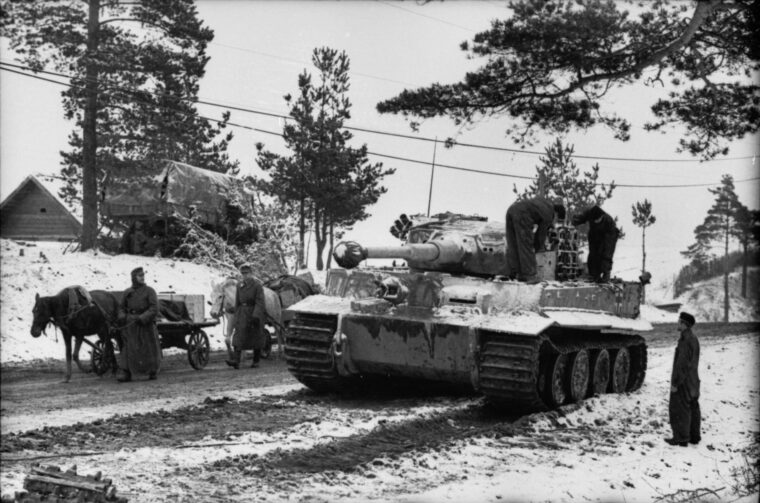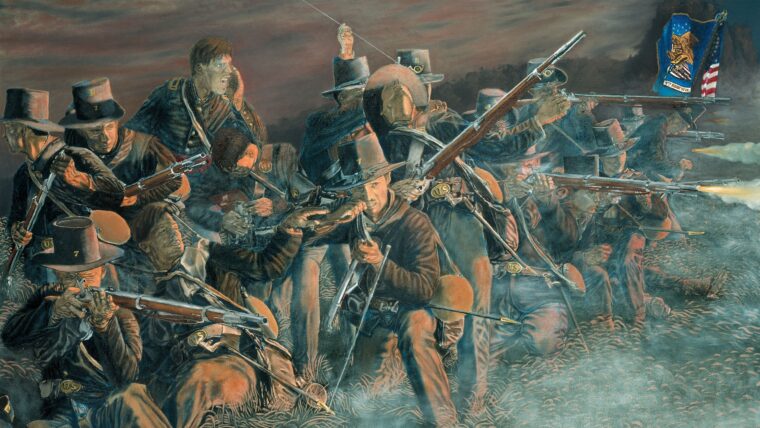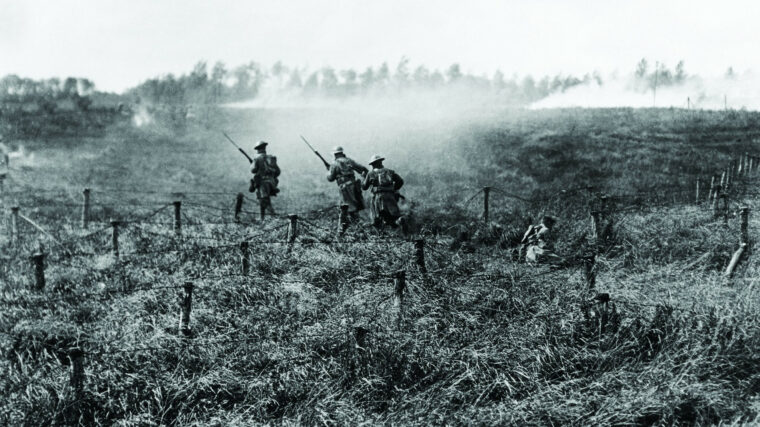
Horses & The Mechanized Myth of the Eastern Front
By John PerryAdvances in military technology, including tanks, jets, and rockets, are among the popular images of Nazi Germany during World War II. Read more

Advances in military technology, including tanks, jets, and rockets, are among the popular images of Nazi Germany during World War II. Read more

World War II made a disparate trio of allies —British Prime Minister Winston Churchill, Soviet Marshal Josef Stalin, and American President Franklin D. Read more

Within a week of the Los Baños raid, paratroopers from Burgess’s 1st Battalion moved back into the Los Baños area to occupy the region. Read more

Under bright moonlight, Union troops marched into Alexandria, Virginia, on May 24, 1861, one day after Virginia seceded from the Union. Read more

In the early morning of June 6, 1944, LCA 668 (Landing Craft, Assault), carrying First Sergeant Len Lomell, Staff Sergeant Jack Kuhn, and most of the 2nd Platoon, 2nd Ranger Battalion, cut through the choppy, green waters of the English Channel. Read more

Vice Admiral William “Bull” Halsey, commander of the U.S. 3rd Fleet, did not want another protracted campaign like he had experienced while trying to take Munda in New Georgia. Read more

When the Sicilian port city of Palermo fell to Lt. Gen. George S. Patton’s Seventh Army on July 22, 1943, his soldiers were surprised by their reception. Read more

A German SS officer, holding a white flag of truce, walked through the American lines and up to a tall lieutenant from Texas. Read more

In the winter of 1893, a struggling young writer named Stephen Crane dropped by the art studio of his painter friend Corwin Linson at the corner of Broadway and 30th Street in New York City. Read more

The ground around Manassas, Virginia, was not auspicious for Union Army forces in the first two years of the Civil War. Read more

On the afternoon of January 7, 1943, Boeing 314s Dixie Clipper and Atlantic Clipper took off from the Marine Air Terminal, La Guardia Airport in New York, their destination Miami. Read more

At 0100 hours on September 12, 1918, German positions in the St. Mihiel salient on the Western Front were lit up by a massive artillery barrage. Read more

Shortly after midnight on the morning of April 12, 1861, four men in a rowboat made their way across the pitch-black harbor at Charleston, South Carolina, toward Fort Sumter, an unfinished and architecturally insignificant masonry fort three miles out from the city where the harbor meets the Atlantic Ocean. Read more

It was unseasonably warm in Charleston when the Democratic National Convention opened for business at noon on April 23, 1860. Read more

The first camps assembled by the Union Army of the Potomac were tent cities, thrown together hastily as new regiments arrived from the free states. Read more

It is a great story, and well known that in January 1942 Thailand’s ambassador to the United States refused to deliver Thailand’s declaration of war to the U.S. Read more

“At Tarnopol we endured heavy Russian fire but in Normandy we were hit again and again, day after day by British artillery that was so heavy the Frundsberg [10th SS Panzer Division “Frundsberg,” named after 16th-century German knight and general Georg Von Frundsberg] bled to death before our eyes. Read more

In July 1637 few Scots or English would have guessed the result when Edinburgh minister James Hannay preached from the Book of Common Prayer, and street merchant Jenny Geddes threw her footstool at his head. Read more

By Steven Karras
Prologue:Once they escaped from Nazi-dominated Europe, hundreds of German and Austrian Jews joined the American and British military to help bring an end to the Nazis’ reign of terror. Read more

The moon like a tray was sinking in the western sea and the deep red sun showed its face to the east. Read more